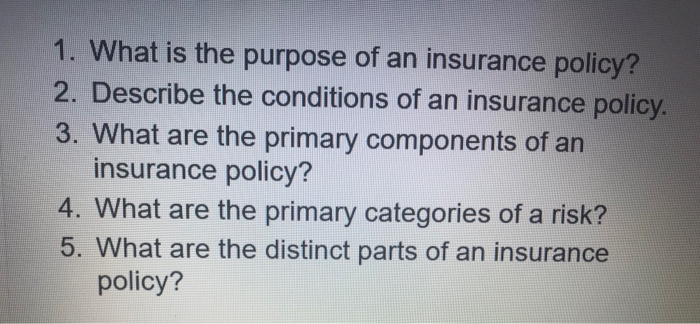What Does Pacific Prime Mean?
What Does Pacific Prime Mean?
Blog Article
Not known Factual Statements About Pacific Prime
Table of ContentsSome Known Factual Statements About Pacific Prime The Definitive Guide for Pacific PrimeWhat Does Pacific Prime Do?Not known Details About Pacific Prime
In most states, the insurance company is called for to send you a copy of the changes to your plan. It is essential that you read Endorsements or Riders so you understand just how your plan has actually altered and if the policy is still sufficient to meet your requirements. To get a duplicate of your insurance coverage, please contact your insurance policy representative or company.
The Institute of Medicine (IOM) Committee on the Consequences of Uninsurance launches an extended evaluation of proof that addresses the value of medical insurance coverage with the magazine of this record. Insurance coverage Matters is the first in a collection of 6 reports that will be issued over the next 2 years recording the fact and effects of having actually an estimated 40 million people in the United States without wellness insurance policy protection.

A Biased View of Pacific Prime
The objective of this series of research studies is to redouble policy interest on a historical trouble. Complying with the lengthiest financial expansion in American history, in 1999, an estimated one out of every 6 Americans32 million adults under the age of 65 and even more than 10 million childrenremains uninsured (Mills, 2000).
Ten percent of the population make up 70 percent of wellness treatment expenditures, a relationship that has stayed constant over the previous 3 decades (Berk and Monheit, 2001) - group insurance plans. Therefore medical insurance remains to serve the feature of spreading threat even as it significantly funds routine treatment. From the perspective of health and wellness care suppliers, insurance coverage brought by their people assists safeguard an earnings stream, and neighborhoods take advantage of monetarily sensible and steady wellness care practitioners and establishments
Federal government gives medical insurance to populaces whom the exclusive market may not serve effectively, such as handicapped and seniors, and populaces whose accessibility to healthcare is socially valued, such as youngsters and expectant ladies. The supreme ends of medical insurance protection for the private and neighborhoods, including office neighborhoods of employees and companies, are enhanced health end results and lifestyle.
The smart Trick of Pacific Prime That Nobody is Talking About
Workers rank health insurance coverage first by much in importance amongst all the advantages provided in the office (Salisbury, 2001). Although there have been large financial investments of personal and public funds to supply health insurance coverage, many people still have no insurance coverage. Regardless of considerable coverage of study findings and healthcare study results, the public stays baffled and mistaken concerning Americans without health insurance policy and the implications of lacking protection.

Without concern, the intricacy of American healthcare financing systems and the wide range of resources of information contribute to the general public's confusion and suspicion concerning medical insurance data and their analysis. This report and those that will comply with purpose to boil down and present in easily understandable terms the comprehensive research study that bears upon questions of health and wellness insurance protection and its importance.
Fifty-seven percent of group insurance plans Americans polled in 1999 thought that those without medical insurance are "able to get the treatment they require from physicians and hospitals" (Blendon et al., 1999, p. 207). In 1993, when nationwide focus was concentrated on the issues of the without insurance and on pending healthcare regulations, just 43 percent of those surveyed held this belief (Blendon et al., 1999).

They also receive less precautionary services and are much less likely to have regular take care of persistent conditions such as high blood pressure and diabetes mellitus. Persistent illness can lead to costly and disabling problems if they are not well managed (Lurie et al., 1984; Lurie et al., 1986; Ayanian et al., 2000). One national survey asked greater than 3,400 adults regarding 15 very major or morbid conditions.
Things about Pacific Prime
Additional evidence exists later in this chapter in the discussion of insurance policy and accessibility to healthcare. https://www.metal-archives.com/users/pacificpr1me. People without medical insurance are young and healthy and balanced and choose to do without coverage. Virtually half (43 percent) of those checked in 2000 believed that people without medical insurance are extra likely to have wellness problems than individuals with insurance
Citizens and policy manufacturers in focus team conversations characterize those without insurance coverage as young people who have the chance to be covered and feel they do not require it (Concierge Novelli, 2001). Compared to those with at the very least some private insurance coverage, the uninsured are much less most likely to report being in superb or extremely excellent health (Company for Health Care Study and Quality, 2001).
SOURCE: Facility for Price and Funding Studies, Agency for Medical Care Research and Quality, based upon MEPS data. Youthful adults between 19 and 34 are far a lot more most likely to do not have health insurance than any kind of other age group. This is mainly since they are much less often eligible for employment-based insurance coverage as a result of the nature of their work or their brief period in it.
The assumption that individuals without insurance policy have better-than-average health follows from confusing the fairly young age profile of the uninsured with the much better health and wellness, typically, of younger persons. This obscures the web link between health condition and health and wellness insurance coverage. For those without accessibility to office wellness insurance policy, inadequate health is a potential obstacle to purchasing nongroup protection because such protection might be highly priced, exclude preexisting problems, or be just inaccessible.
Report this page